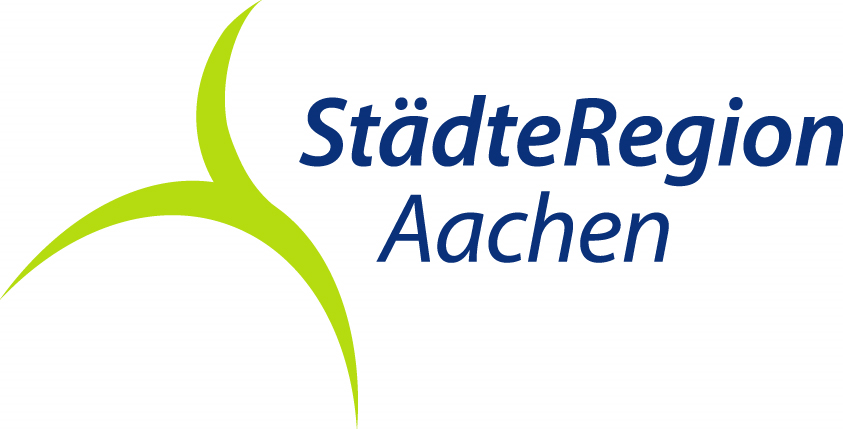GrenzRoute 1: Vom Fuß der Eifel zum Mergelland
Raeren
The hiking route begins in Raeren. From the 15th to the 18th century, the municipality was one of the best-known pottery-making locations in the Rhineland. The pottery museum in the historic castle complex still presents local, regional and international stone and ceramic products from past centuries. Raeren stoneware has been a European cultural heritage site since 2007.
The hiking route follows the Iterbach, whose source is in Raeren, through meadows and fields to the north-east across the border into Germany. From Sief, the border route leaves the Iter valley and heads north to Brandenburg Castle, a restored medieval manor house with the adjoining nave of a former nunnery.
The route continues west through the Freyenter Forest, via Lichtenbusch to the Köpfchen border crossing. On the way, you should leave the border route briefly to pay a visit to the idyllic spring lake in the forest (one of the three Göhl springs).
After passing the Cyclopean stones, geological evidence of a past shaped by water, the route crosses the Köpfchen border crossing. Köpfchen is the name of the former border crossing on the Eupener Straße between Aachen (D) and Raeren (B). In the 1950s, heavy goods traffic on the Belgian side led to the construction of the border post in the middle of the road. After the border was opened in 1995 (Schengen Agreement), the facilities were abandoned and threatened with decay. It was only when the German-Belgian association "Kunst und Kultur im Köpfchen" (KuKuK) was founded in 2000 that the preservation of the Belgian customs building was secured. Since then, the site has been revitalized with diverse and well-attended cultural events.
From now on, the route leads steadily to the northwest. The next stop is the Westwall, a relic of the National Socialist past in the Aachen region and today a refuge for many rare plants and animals. Via Gut Entenpfuhl, through the Preus and later the Königswald forest, you reach the border triangle where the borders of the Netherlands, Belgium and Germany meet. With around 800,000 visitors a year, the place has become an attraction for tourists. Also the highest point in the Netherlands at 322.5 meters above sea level, the Dreiländerpunkt also stands for the historically grown similarities and connections between the inhabitants of the three-country region.
Not far from the Dreiländerpunkt, the border route meets the nature adventure trail, which is followed for a short distance. You can also "experience nature and landscape with all your senses" at four of the twelve stations - the motto of the nature discovery trail! At the Wilhelmina Tower, you will also come across another eagle stone in the middle of the trail. There are impressive views of the Aachen basin along the panoramic trail at the edge of the forest.
The route leads through the Dreiländerwald forest to Vaals. The border town offers a range of cultural and historical attractions. For example, the old border house "Kleng Wach" is now home to the smallest and highest museum in the Netherlands, which focuses on the history of smugglers. It is also worth taking a 30-minute detour off the route through the baroque ensemble of houses on Clermontplein.
At the Schneeberg, between Vaals and the destination of Orsbach, the route meets the Westwall for a second time. The 350m long armored wall on the southern slope of the mountain completed the hump line. Opposite is the access path to the Schneeberg Chapel, which the local farmer Wilhelm Maßen built between 1945 and 1960 with the help of the artist Hodiamont. Many bombs fell here during the war in 1944 and he vowed to build a chapel if the people here were spared.
The Schneeberg owes its name to the chalk marl found in the west of the city of Aachen, which makes the top of the mountain appear white. The wooded hill is largely designated as a nature reserve, as are the narrow strips of hedges along the path to Orsbach. Here you have a wide view over the valley as far as Vijlen.
After around 30 km, the border route ends in the shadow of Orsbach Castle. The castle was built from quarrystone in the 14th century and is now one of the most striking buildings in the village of the same name.



























